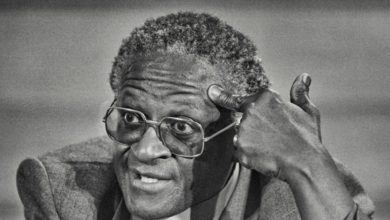North Korea Tests a Suspected ICBM

(SEOUL, South Korea) — North Korea fired a suspected long-range missile toward the sea Thursday in what would be its first such test since 2017, according to its neighbors’ militaries, raising the ante in a pressure campaign aimed at forcing the United States and other rivals to accept it as a nuclear power and remove crippling sanctions.
The launch, which extended North Korea’s barrage of weapons tests this year, came after the U.S. and South Korean militaries said the country was preparing a flight of its biggest-yet intercontinental ballistic missile.
South Korea’s Joint Chiefs of Staff didn’t immediately say whether the weapon involved in the launch was ballistic or how far it flew. But Japan’s Deputy Defense Minister Makoto Oniki said the missile, which traveled 1,100 kilometers (660 miles) while reaching a maximum altitude of over 6,000 kilometers (3,728 miles), likely was a new ICBM. According to flight data, the missile may have been fired at a greater angle than usual in order not reach Japan’s territorial waters.
Japan’s coast guard, which warned vessels in nearby waters about the potential for falling objects, said it believed the missile flew about an hour before landing in waters outside the country’s exclusive economic zone. No immediate damage was reported to aircraft or boats.
South Korean President Moon Jae-in called an emergency National Security Council meeting where he criticized North Korean leader Kim Jong Un for breaking a self-imposed moratorium on ICBM tests and posing a “serious threat” to the region and the broader international community. Moon instructed officials to pursue “all possible response measures” based on its alliance with the United States and cooperation with other international partners, his office said.
“Even when the international community is responding to the Russian invasion of Ukraine, North Korea has been forcing its missile launches, which could one-sidedly escalate provocations,” Oniki said.
Kim suspended nuclear explosive and ICBM testing after a provocative string in 2017 before meeting Donald Trump for the first time.
North Korea’s slew of weapons tests reflects a determination to cement its status as a nuclear power and wrest badly needed economic concessions from Washington and others from a position of strength, analysts say.
Kim Jong Un might also be driven to promote his military achievements to his home audience to build loyalty, as he struggles with an economy that is deteriorating due to the closure of border crossings.
“Despite economic challenges and technical setbacks, the Kim regime is determined to advance its missile capabilities,” said Leif-Eric Easley, a professor of international studies at Seoul’s Ewha Womans University. “It would be a mistake for international policymakers to think the North Korean missile threat can be put on the back burner while the world deals with the pandemic and Russia’s invasion of Ukraine.”
The Biden administration’s passive handling of North Korea so far, while it focuses on Russia’s invasion of Ukraine and an intensifying rivalry with China, is allowing more room for the North to dial up its testing activity, some experts say. The administration’s actions on North Korea have so far been limited to largely symbolic sanctions imposed over its recent tests and offers of open-ended talks that were quickly turned down by Pyongyang’s leadership.
There are views in Seoul that Washington is slipping back to the Obama administration’s “strategic patience” policy of ignoring North Korea until it demonstrates seriousness about denuclearization, although that approach was criticized for neglecting a gathering nuclear threat.
It was North Korea’s 12th round of weapons launches this year and came after it fired suspected artillery pieces into the sea on Sunday.
North also tried a number of missiles. It launched its first missile launch in 2017 since 2017.
It also conducted two medium-range tests in recent weeks from Sunan, home to the country’s main airport, that the U.S. and South Korean militaries assessed to have involved components of the North’s largest ICBM. Allies believed the missile, known as Hwasong-17 by the North, would soon be capable of reaching full range.
These tests were conducted after a Sunan launch last week. But South Korea’s military said the missile likely exploded shortly after liftoff. The cause of the explosion, as well as the possible civilian casualties remain unknown.
North Korea’s official media insisted that the two successful tests were aimed at developing cameras and other systems for a spy satellite. Analysts claim that the North seeks to simultaneously restart ICBM testing, and obtain some space-based reconnaissance capability. This is in the pretense to launch a space rocket to decrease international outrage.
It is possible that the launch will be held around the April birthday of Kim Il Sung (the late grandfather of the current leader Kim Jong Un), a significant political anniversary.
The North’s previous ICBMs demonstrated potential range to reach the American homeland during three flight tests in 2017. Experts speculate that North Korea’s creation of the Hwasong-17 larger missile launcher, first shown in military parade October 2020, may have indicated an intent to arm it with several warheads to overcome anti-missile defenses.
North tested an ICBM last November 2017. The Hwasong-15 flew for approximately 600 miles (1,000 km) and traveled about 50 minutes at a maximum altitude 4,000km (2,400 mi). It wasn’t immediately clear whether the missile from the latest test was the Hwasong-17.
Denuclearization talks with the U.S. have been stalled since 2019, when the Americans rejected North Korea’s demand for a major release of crippling U.S.-led sanctions in exchange for a partial surrender of its nuclear capabilities.
Kim presided over a ruling Workers’ Party meeting on Jan. 19, where Politburo members issued a veiled threat to end his ICBM moratorium, citing U.S. hostility. The North carried out its first intermediate-range missile test in 2017 eleven days later. This signaled a return to major weapon testing.
South Korea’s military has also detected signs that North Korea was possibly restoring some of the tunnels at its nuclear testing ground that were detonated in May 2018, weeks ahead of Kim’s first meeting with Trump. The military didn’t say whether it believes the North was restoring the site to resume nuclear tests.
Here are more must-read stories from TIME





